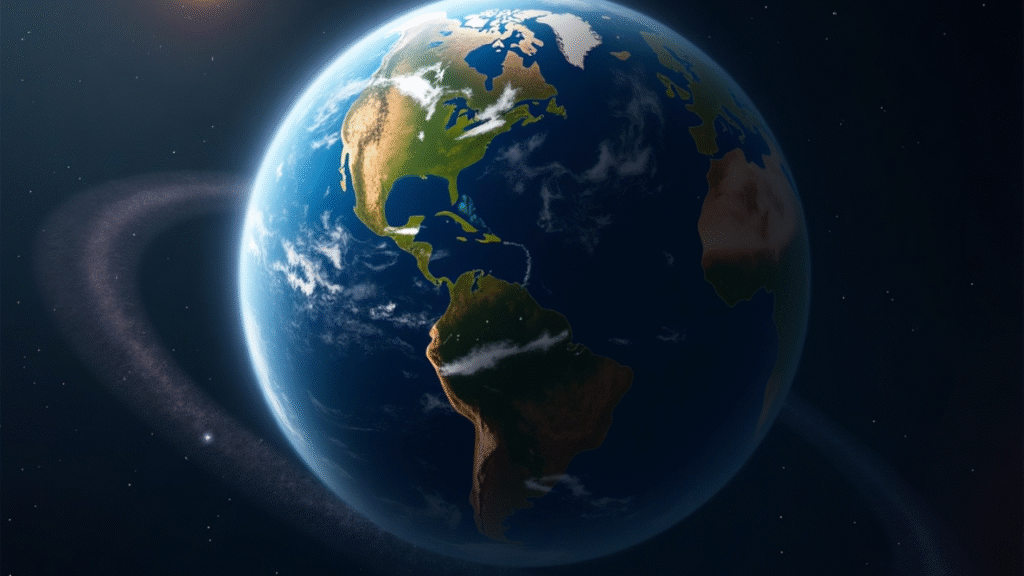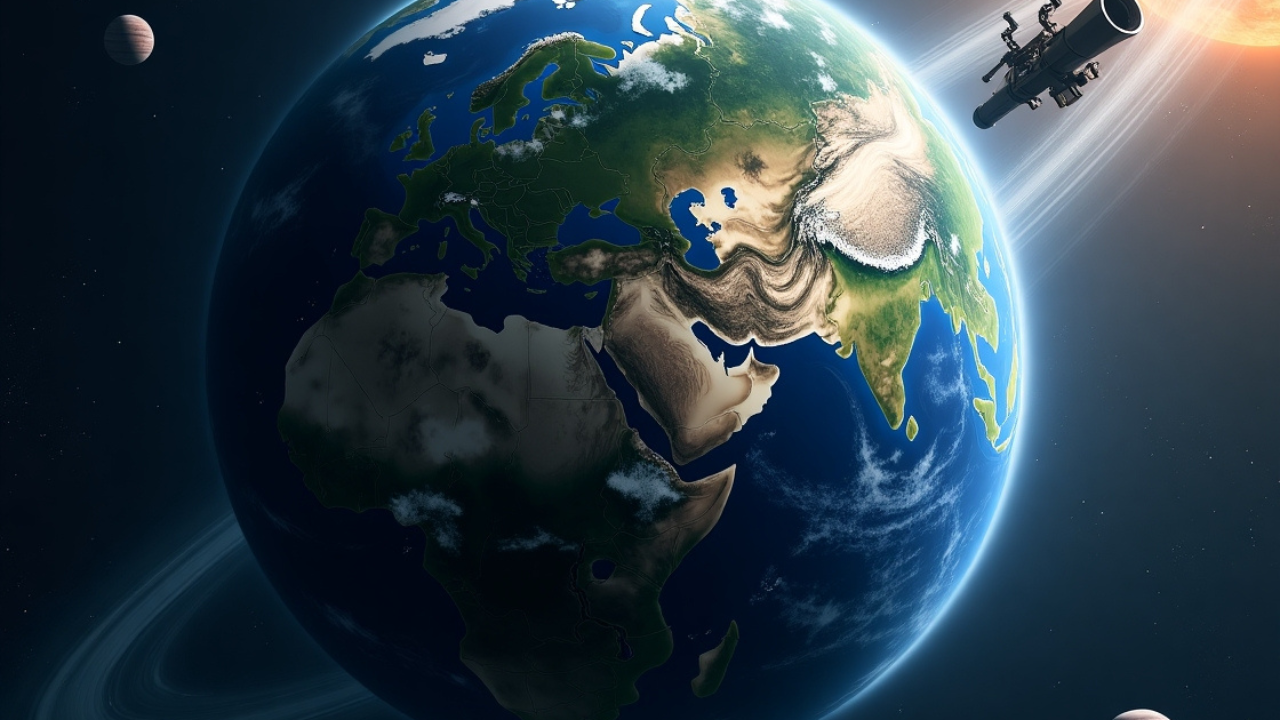For centuries, humanity has looked up at the night sky and wondered: Are we alone? The discovery of planets beyond our solar system—known as exoplanets—has transformed that age-old question into a scientific quest. With each passing year, astronomers inch closer to finding habitable worlds that could be potential homes for life.
The search is no longer just science fiction. Thanks to missions like Kepler and the James Webb Space Telescope (JWST), we now know thousands of exoplanets exist, including a handful that are remarkably Earth-like. But the most exciting chapter is yet to come. Next-generation telescopes promise to bring us closer than ever to discovering Earth’s twin—a habitable world orbiting a distant star.
The Rise of Exoplanet Discovery
The first confirmed exoplanet was discovered in 1992, orbiting a pulsar. Since then, the pace of discovery has exploded. The Kepler Space Telescope revolutionized astronomy by identifying thousands of candidates, many of them small rocky planets in the so-called habitable zone—the region around a star where liquid water could exist.
Today, astronomers have catalogued more than 5,000 confirmed exoplanets, and the number continues to grow. Among these, a select few stand out as potential habitable worlds, raising hopes that life could exist beyond Earth.

What Makes a World Habitable?
When scientists talk about habitable exoplanets, they are usually referring to planets that meet three key conditions:
- Location in the Habitable Zone: The planet must orbit its star at a distance where temperatures allow liquid water to exist.
- Rocky Composition: Like Earth, the planet should have a solid surface, unlike gas giants such as Jupiter.
- Atmosphere: A stable atmosphere is essential for regulating temperature and protecting potential life from harmful radiation.
Other factors, like magnetic fields, plate tectonics, and even the presence of a large moon, could also play a role. Still, identifying a planet with water and a protective atmosphere would be a major breakthrough.
Recent Earth-Like Candidates
Several exoplanets discovered in recent years are tantalizingly close to being Earth’s twin:
1. Proxima Centauri b
Orbiting the closest star to our solar system, just 4.2 light-years away, Proxima b is within its star’s habitable zone. While stellar flares may pose a challenge, it remains one of the most promising candidates.
2. TRAPPIST-1 System
This red dwarf star hosts seven rocky planets, three of which lie in the habitable zone. Their sizes are similar to Earth’s, making the system a prime target for study.
3. Kepler-452b
Dubbed “Earth’s cousin,” Kepler-452b orbits a Sun-like star in the habitable zone. It’s larger than Earth but has similar conditions for potential habitability.
4. TOI-700 d
Discovered by NASA’s TESS mission, this planet lies in its star’s habitable zone and is nearly Earth-sized.
Each of these discoveries demonstrates that habitable worlds are not rare, and the chances of finding Earth’s twin are increasing with every telescope upgrade.

How Next-Gen Telescopes are Changing the Game
While we’ve identified promising candidates, proving they are habitable exoplanets requires more powerful instruments. Current telescopes can detect planets and measure their size and orbit, but to truly know if they could host life, we need to study their atmospheres for signs of water, oxygen, methane, or other biosignatures.
This is where next-gen telescopes come in.
1. James Webb Space Telescope (JWST)
JWST, launched in 2021, is already analyzing the atmospheres of exoplanets by studying the light that passes through them. It has the potential to detect molecules like water vapor and carbon dioxide, providing the first hints of habitability.
2. LUVOIR (Large UV Optical Infrared Surveyor)
A proposed NASA mission, LUVOIR would be a true powerhouse, capable of directly imaging Earth-like planets around Sun-like stars. It could even map continents and oceans on distant worlds.
3. HabEx (Habitable Exoplanet Observatory)
Specifically designed to find habitable worlds, HabEx would use advanced coronagraphs and starshades to block starlight, making it easier to directly see exoplanets.
4. ELT, TMT, and GMT (Ground-Based Giants)
On Earth, massive observatories like the Extremely Large Telescope (ELT) in Chile, the Thirty Meter Telescope (TMT) in Hawaii, and the Giant Magellan Telescope (GMT) will study exoplanet atmospheres with unprecedented detail.
Together, these instruments represent a new era in the search for Earth’s twin.
The Search for Biosignatures
The holy grail of exoplanet science is detecting biosignatures—indicators of life in an exoplanet’s atmosphere. This could include:
- Oxygen & Ozone – produced by photosynthetic organisms.
- Methane – associated with biological processes.
- Water Vapor – essential for life as we know it.
- Unusual Chemical Imbalances – combinations unlikely to exist without biology.
If next-gen telescopes detect these signs on a distant habitable world, it would be one of the most profound discoveries in human history.
Beyond Habitable Zones: Exotic Worlds
While the search often focuses on Earth-like planets, scientists are also expanding their horizons. Could life exist in subsurface oceans on icy moons, or in the clouds of Venus-like worlds? Could exotic biochemistries thrive in environments very different from Earth?
The hunt for habitable worlds is ultimately a hunt for life in all its possible forms, not just a mirror image of Earth.

Why the Search Matters
The quest for Earth’s twin is more than an academic exercise. It speaks to some of humanity’s deepest questions:
- Are we alone in the universe?
- How common is life?
- What makes Earth special—or ordinary?
Finding habitable exoplanets also has practical implications. While interstellar travel remains science fiction for now, understanding other worlds could shape humanity’s long-term future among the stars.
A New Dawn in Exoplanet Exploration
We are living in an extraordinary moment in astronomy. Just a generation ago, we didn’t even know if other planets existed beyond our solar system. Today, we are on the verge of finding habitable worlds and perhaps even life itself.
With future space telescopes like JWST, LUVOIR, and HabEx, the dream of discovering Earth’s twin is no longer far-fetched. Instead, it is a question of when, not if.
As we continue the hunt for habitable worlds, we are not just searching for planets. We are searching for answers about life, the universe, and our own place within it. And with every discovery, we get closer to realizing that the cosmos may be far more alive—and more welcoming—than we ever imagined.
In short: The future of exoplanet science is bright. With powerful new telescopes, humanity is on the brink of discovering habitable worlds and, perhaps, our true cosmic neighbors.








